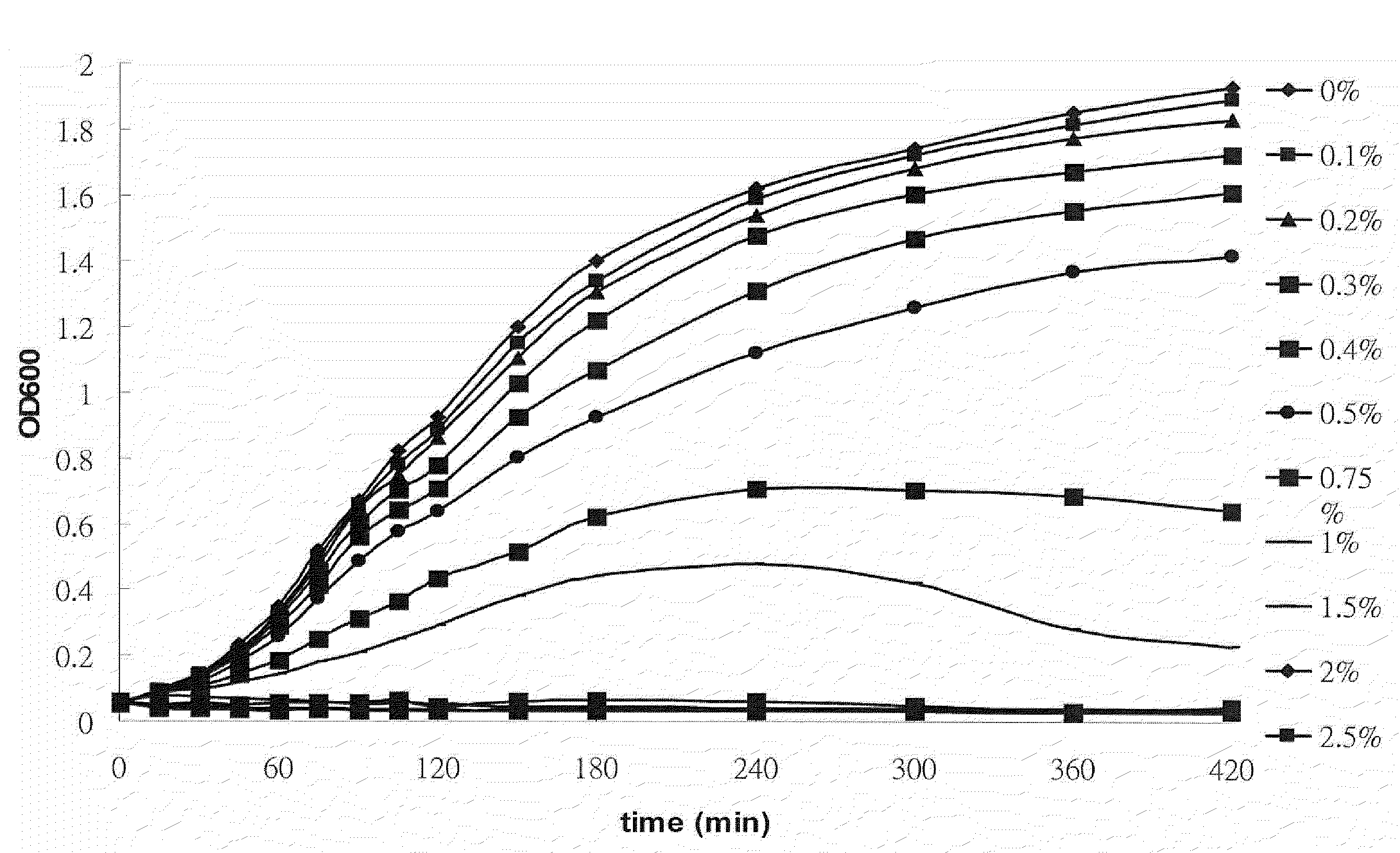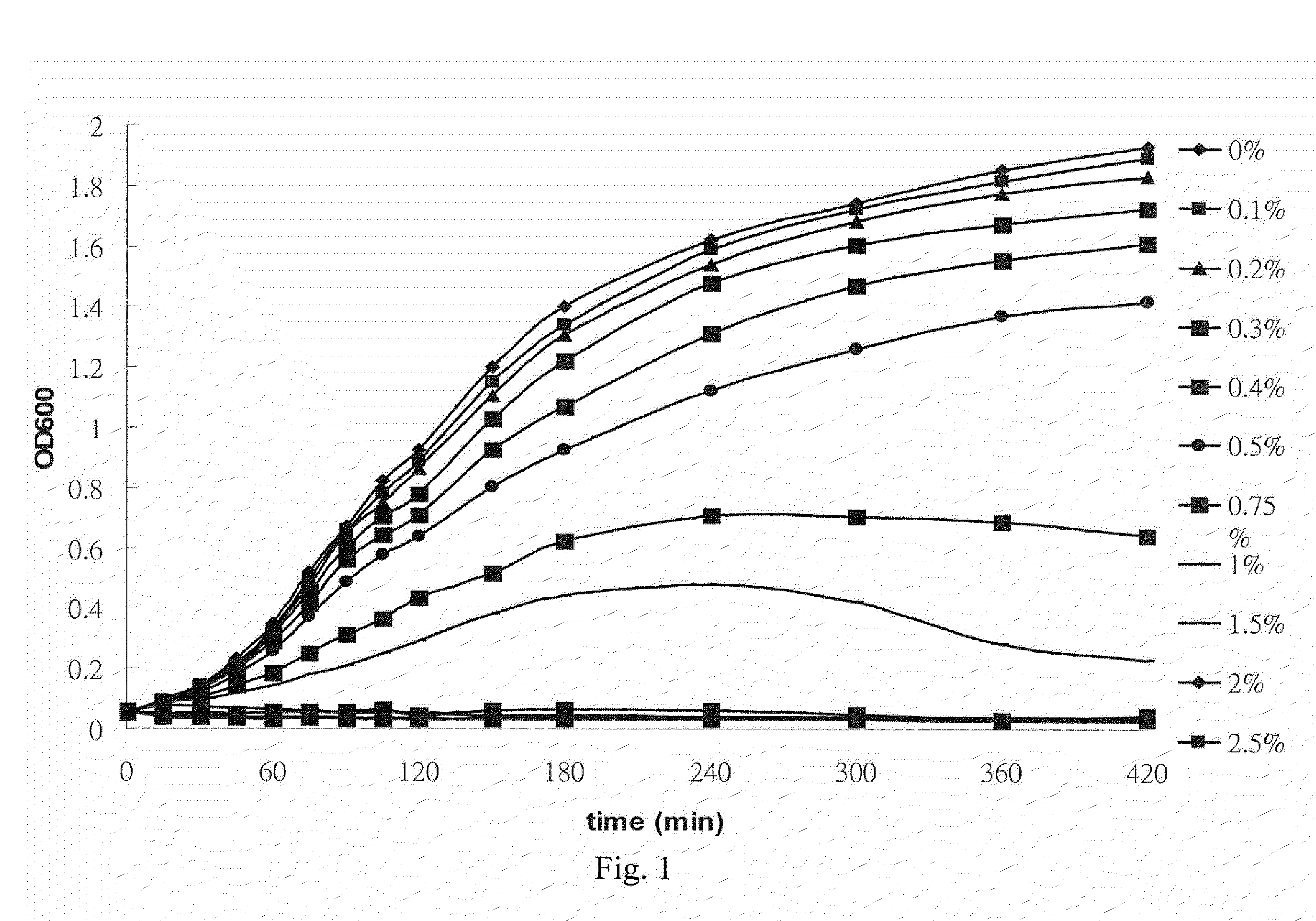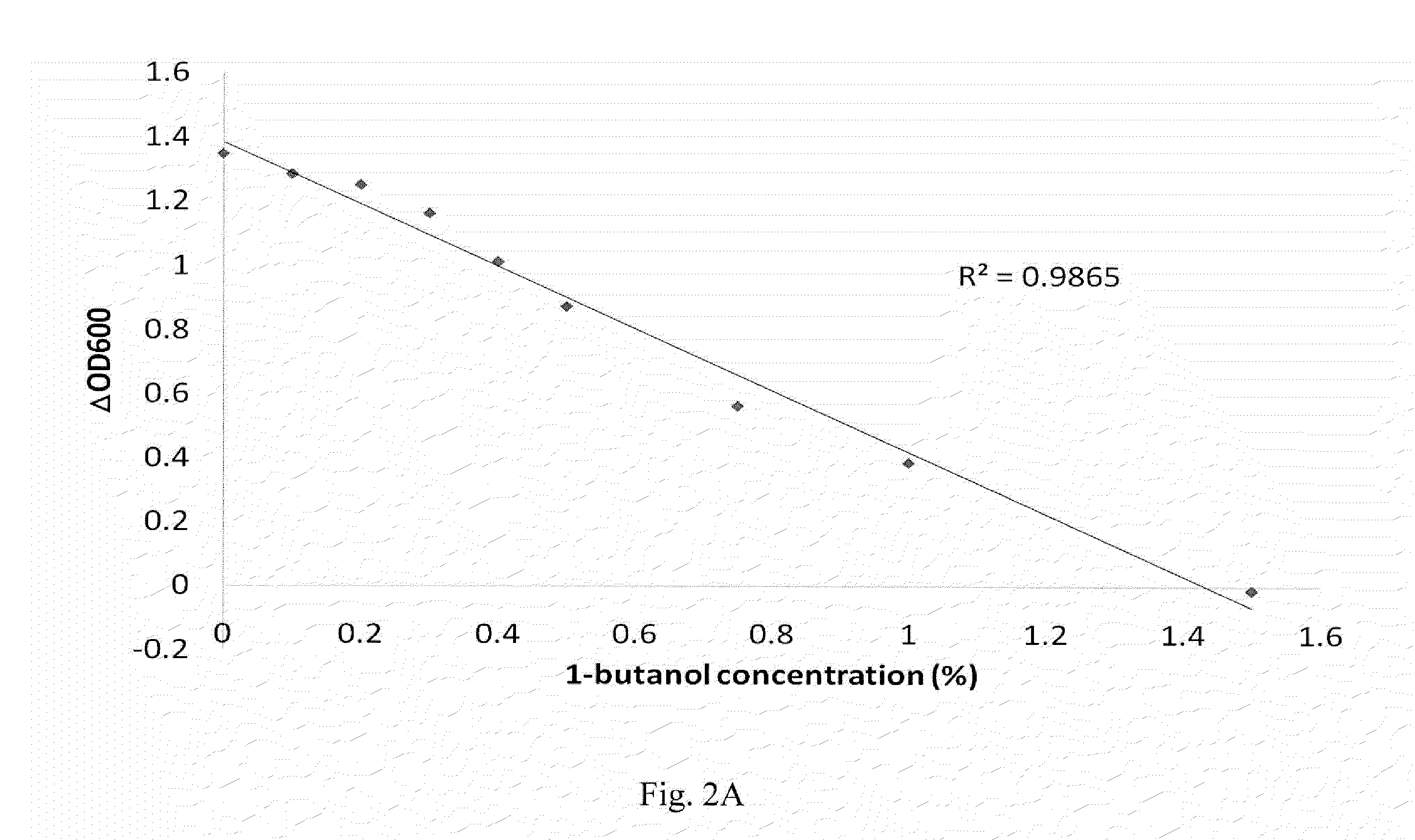Alcohol tolerant escherichia coli and methods of preparation thereof
a technology of escherichia coli and alcohol, which is applied in the field of alcohol tolerant escherichia coli, can solve the problems of slow down of the ab process, difficult difficult to achieve the control of the fermentation process, so as to achieve cost saving and increase the effect of yield
- Summary
- Abstract
- Description
- Claims
- Application Information
AI Technical Summary
Benefits of technology
Problems solved by technology
Method used
Image
Examples
example 1
1-Butanol Tolerance of Wild Type E. Coli Strain
[0034]E. coli wild-type strain BW25113 was cultured overnight and then inoculated into a fresh LB medium containing 0-10% (v / v) of 1-butanol. Cells were cultivated with shaking and the optical density at 600 nm was measured every 15 minutes.
[0035]As shown in FIG. 1, the growth of E. coli was monitored by the optical density at 600 nm, which was based on the changes of cell turbidity in the present invention. The OD600 decreased with the increasing concentration of 1-butanol. 1-butanol was shown to inhibit the cell density of E. coli. The growth inhibitory was even obvious when the concentration of 1-butanol was equal or larger than 1.5% (v / v). FIG. 2A and FIG. 2B showed the reverse linear effects of various concentration of 1-butanol toward the OD600 at late log phase (180 min) or stationary phase (420 min) respectively, where the Pearson's correlation coefficient R2 were 0.9865 and 0.9291 respectively. Therefore, the linear inhibitory ...
example 2
Large Scale Screening of 3985 Single-Gene Deletion Mutants (the Keio Collection)
[0036]Mutants from the Keio collection were replicated into 96-well plates containing 100 μl of LB medium supplemented with 30 μg / ml of kanamycin per well. Plates were incubated overnight at 37° C. with shaking. A 10 μl of cell solution from overnight culture was inoculated into 96-well polystyrene plates containing 100 μl of LB medium as the control group or LB medium containing 2% 1-butanol as the experimental group at 37° C. for 3 h. Growth of cells was monitored by reading the absorbance (OD595) of each well using a microplate reader (Bio-Rad, Hercules, Calif., USA). Then, the survival rate was obtained by dividing the OD595 difference of the mutant strain (after 3 h of treatment) to that of the wild type strain.
Survival rate=difference of OD595 between mutant (3 h-0 h) / difference of OD595 between wild type (3 h-0 h)×100%
[0037]Mutants with higher survival rate than that of the wild type were selected...
example 3
Protein Extraction of 1-Butanol Tolerant Mutant Strains
[0038]Both the experimental group (after 2 h 1-butanol treatment) and the control group (untreated) of E. coli BW25113 from 20 ml of overnight culture to 0.4 OD595 were collected and washed three times with a solution containing 3 mM of KCl, 1.5 mM of KH2PO4, 68 mM of NaCl, and 9 mM of NaH2PO4. One ml of lysis solution containing 7 M urea, 2 M thiourea, 4% CHAPS and 0.002% bromophenol blue was added to the cell pellet. The mixture was sonicated in discontinuous mode for 5 minutes on ice. The cell lysate was centrifuged at 4° C. at 15,000 g for 30 min. The supernatant was collected and the concentration was measured with a protein assay kit (Bio-Rad, Hercules, Calif., USA).
Two Dimensional Gel Electrophoresis (2DE) of Protein
[0039]2DE was performed using an Ettan IPGphor III (GE). Four hundred μg of total proteins were mixed with rehydration buffer containing 7 M urea, 2 M thiourea, 4% CHAPS, 65 mM DTE, 1% pH 3-10 NL IPG buffer an...
PUM
| Property | Measurement | Unit |
|---|---|---|
| v/v | aaaaa | aaaaa |
| v/v | aaaaa | aaaaa |
| v/v | aaaaa | aaaaa |
Abstract
Description
Claims
Application Information
 Login to View More
Login to View More - R&D
- Intellectual Property
- Life Sciences
- Materials
- Tech Scout
- Unparalleled Data Quality
- Higher Quality Content
- 60% Fewer Hallucinations
Browse by: Latest US Patents, China's latest patents, Technical Efficacy Thesaurus, Application Domain, Technology Topic, Popular Technical Reports.
© 2025 PatSnap. All rights reserved.Legal|Privacy policy|Modern Slavery Act Transparency Statement|Sitemap|About US| Contact US: help@patsnap.com



